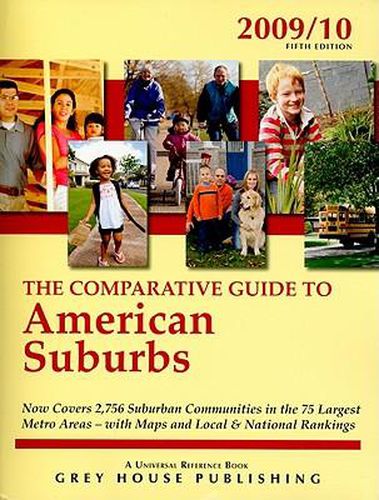Readings Newsletter
Become a Readings Member to make your shopping experience even easier.
Sign in or sign up for free!
You’re not far away from qualifying for FREE standard shipping within Australia
You’ve qualified for FREE standard shipping within Australia
The cart is loading…






The Comparative Guide to American Suburbs is a one-stop source for Statistics on the 2,000+ suburban communities surrounding the 50 largest metropolitan areas - their population characteristics, income levels, economy, school systems and important data on how they compare to one another. Organized into 60 Metropolitan Area chapters, each chapter contains: Overview of the Metropolitan Area, Detailed Map, Statistical Profile of each Suburban Community, Contact Information, Physical Characteristics, Population Characteristics, Income & Economy, Unemployment Rate, Cost of Living, Education, Chambers of Commerce and much more. Next, statistical data is sorted into Ranking Tables that rank the suburbs by twenty different criteria, including Population, Per Capita Income, Unemployment Rate, Crime Rate, Cost of living and more. These useful, easy-to-read tables allow for quick and easy comparisons between suburbs. The Comparative Guide to American Suburbs is the best source for locating data on suburbs. Those looking to relocate, as well as those doing preliminary market research, will find this an invaluable, timesaving resource.
$9.00 standard shipping within Australia
FREE standard shipping within Australia for orders over $100.00
Express & International shipping calculated at checkout
The Comparative Guide to American Suburbs is a one-stop source for Statistics on the 2,000+ suburban communities surrounding the 50 largest metropolitan areas - their population characteristics, income levels, economy, school systems and important data on how they compare to one another. Organized into 60 Metropolitan Area chapters, each chapter contains: Overview of the Metropolitan Area, Detailed Map, Statistical Profile of each Suburban Community, Contact Information, Physical Characteristics, Population Characteristics, Income & Economy, Unemployment Rate, Cost of Living, Education, Chambers of Commerce and much more. Next, statistical data is sorted into Ranking Tables that rank the suburbs by twenty different criteria, including Population, Per Capita Income, Unemployment Rate, Crime Rate, Cost of living and more. These useful, easy-to-read tables allow for quick and easy comparisons between suburbs. The Comparative Guide to American Suburbs is the best source for locating data on suburbs. Those looking to relocate, as well as those doing preliminary market research, will find this an invaluable, timesaving resource.